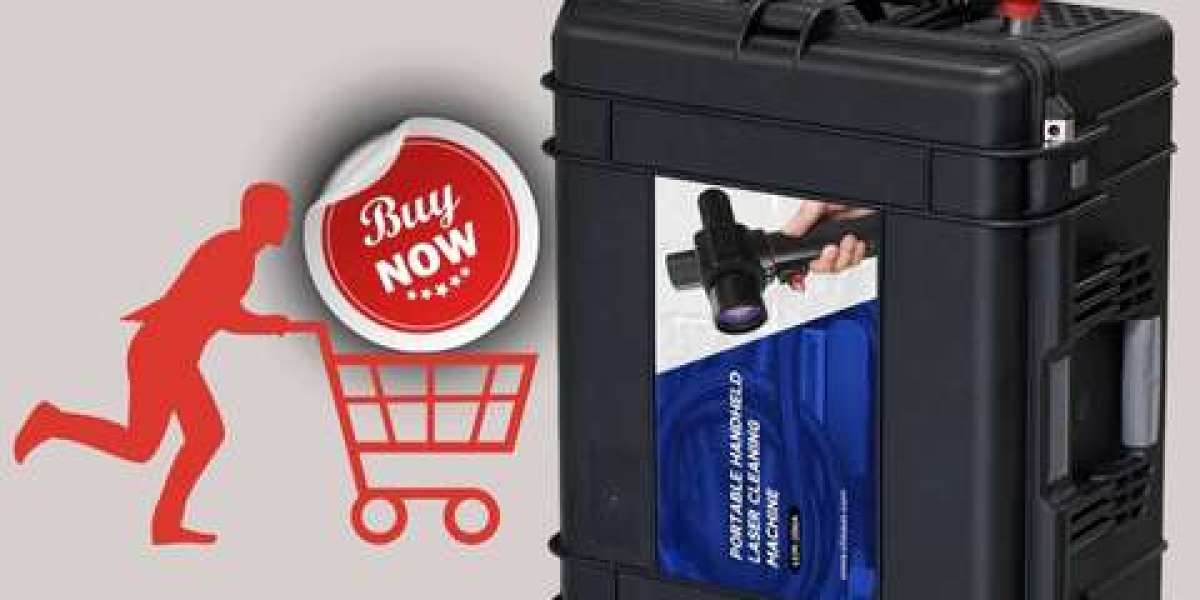Portable laser cleaning machine equipment uses high-energy laser beams to remove rust, paint, coatings, oil, and other contaminants from metal and non-metal surfaces. Its compact design and ease of movement make it a practical choice for industries that require cleaning in different work environments, including construction, automotive, aerospace, shipbuilding, and heavy machinery. By eliminating the need for chemical solvents or abrasive blasting, it also provides an environmentally friendly solution while reducing long-term operating costs.
In this detailed guide, we will explore how the portable laser cleaning machine works, where it is applied, why industries are rapidly adopting it, and how it is shaping the future of surface treatment technologies.
How the Portable Laser Cleaning Machine Works
At the core of the machine is a laser source that emits a concentrated beam of light. When the beam is directed at a contaminated surface, it delivers energy in very short pulses. These pulses create a micro-ablation effect, meaning that the contaminants are vaporized or removed without harming the underlying material. Unlike mechanical cleaning, which scrapes the surface, or chemical cleaning, which introduces harmful substances, laser cleaning works with precision.
The process is controlled and adjustable. Operators can set the beam intensity, frequency, and speed to match the material type and level of contamination. The portable laser cleaning machine also integrates with cooling systems and optical focusing components to ensure stable performance during extended operation.
Mobility is a major advantage. Instead of transporting large components to a fixed cleaning station, workers can carry or wheel the portable machine to the worksite, reducing downtime and improving efficiency. This portability is especially useful in industries like aerospace and shipbuilding, where large structures cannot be moved easily.
Applications of Portable Laser Cleaning Machines
The versatility of this technology allows it to serve in multiple sectors. Each industry benefits from its ability to clean surfaces effectively without wear or chemical residues.
1. Rust Removal
Metal surfaces exposed to air and moisture inevitably develop rust. The portable laser cleaning machine removes rust layers quickly, leaving behind a clean surface that is ready for welding, painting, or coating. This is particularly useful in automotive restoration, rail maintenance, and industrial machinery repair.
2. Paint and Coating Removal
Old paint layers, protective coatings, or varnishes can be stripped with precision. Unlike sandblasting, which may damage the surface profile, the laser process maintains the integrity of the base material. This is valuable for aerospace and automotive industries, where surface quality directly impacts performance and safety.
3. Oil and Grease Cleaning
Machines and tools often accumulate oil, grease, or other organic residues. The portable laser cleaning machine vaporizes these contaminants, reducing the risk of fire hazards in industrial settings and ensuring that surfaces are suitable for bonding or coating processes.
4. Cultural Heritage Preservation
In the field of restoration, delicate cleaning is required to preserve artifacts, monuments, or historical structures. The adjustable settings of the laser allow conservators to remove dirt and pollutants without harming the underlying stone, wood, or metal.
5. Welding Preparation and Post-Weld Cleaning
Before welding, surfaces must be clean to ensure strong bonds. After welding, oxidation layers or discoloration often appear. The portable laser cleaning machine can prepare and finish these surfaces quickly, making it a valuable tool for fabrication workshops.
Why Industries Are Switching to Portable Laser Cleaning Machines
The adoption of portable laser cleaning machines is driven by a combination of performance, safety, and cost considerations. Traditional cleaning methods like sandblasting, chemical baths, or grinding produce waste, consume consumables, and often involve strict safety regulations. Laser cleaning eliminates most of these issues by being a dry, contactless process.
Manufacturers also value the precision it provides. Since the beam can be controlled with high accuracy, it allows selective cleaning of specific areas without affecting surrounding surfaces. For industries that deal with high-value components, such as aerospace and electronics, this level of control is crucial.
Additionally, the portability factor makes it more adaptable to different environments. Large factories, shipyards, or outdoor construction sites benefit from equipment that can move directly to the problem area instead of requiring complex setups.
Safety and Operational Considerations
While the portable laser cleaning machine is highly effective, its operation requires adherence to safety standards. Operators must wear protective gear such as laser safety glasses and ensure that the work area is shielded from stray reflections. Proper ventilation is also necessary since contaminants removed by the laser may release particles or gases.
The machines are designed with interlock systems, cooling units, and safety features to minimize risks. With proper training, operators can manage the equipment efficiently and maintain consistent cleaning results.
Impact on Production Efficiency
One of the strongest points in favor of portable laser cleaning machines is their impact on production workflows. Since the cleaning process is fast, precise, and requires no consumables, industries can achieve higher throughput. Maintenance downtime is reduced, and the need for additional surface preparation steps is minimized.
For example, in welding shops, workers no longer need to spend extended time manually cleaning metal plates before joining them. In aerospace applications, paint stripping can be completed in less time and with better precision, improving the turnaround time for maintenance operations.
Future of Portable Laser Cleaning Machines
As technology advances, portable laser cleaning machines are becoming more compact, powerful, and energy-efficient. Fiber laser sources with higher beam quality and longer lifespans are being integrated, ensuring reliable performance for years of use.
Software integration is another area of development. Modern machines can be paired with digital monitoring systems that allow operators to track cleaning progress, adjust parameters automatically, and record data for quality assurance. This makes them even more attractive to industries aiming for smart manufacturing solutions.
With growing demand for sustainable practices, the portable laser cleaning machine is likely to become a standard tool across multiple industries, replacing outdated cleaning methods and setting new benchmarks in efficiency and safety.
Final Thoughts
The portable laser cleaning machine is transforming how industries approach surface preparation and maintenance. Its mobility, precision, and efficiency make it a versatile solution for rust removal, paint stripping, grease cleaning, and even heritage restoration. By eliminating the need for chemicals and abrasives, it addresses both environmental and operational concerns, while also enhancing productivity. As technology continues to evolve, this tool is expected to play an even greater role in shaping modern industrial practices.








